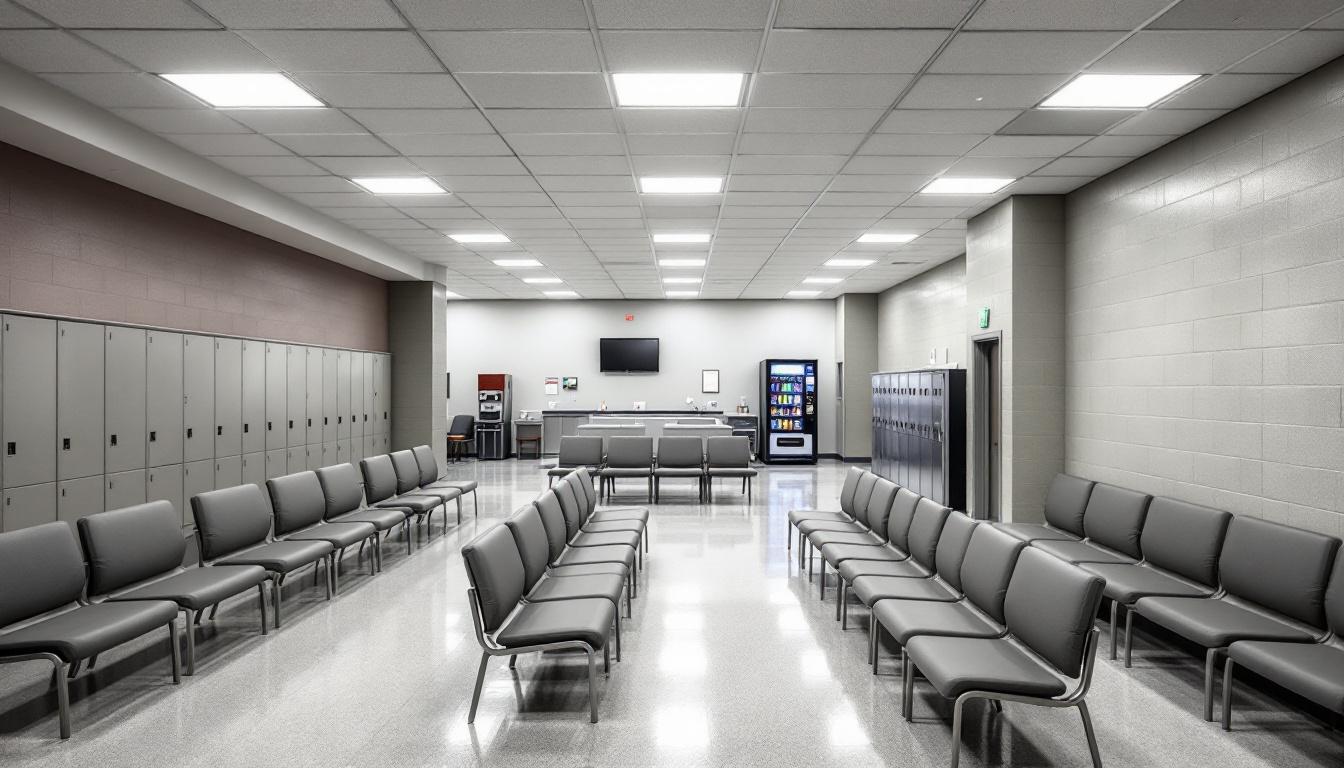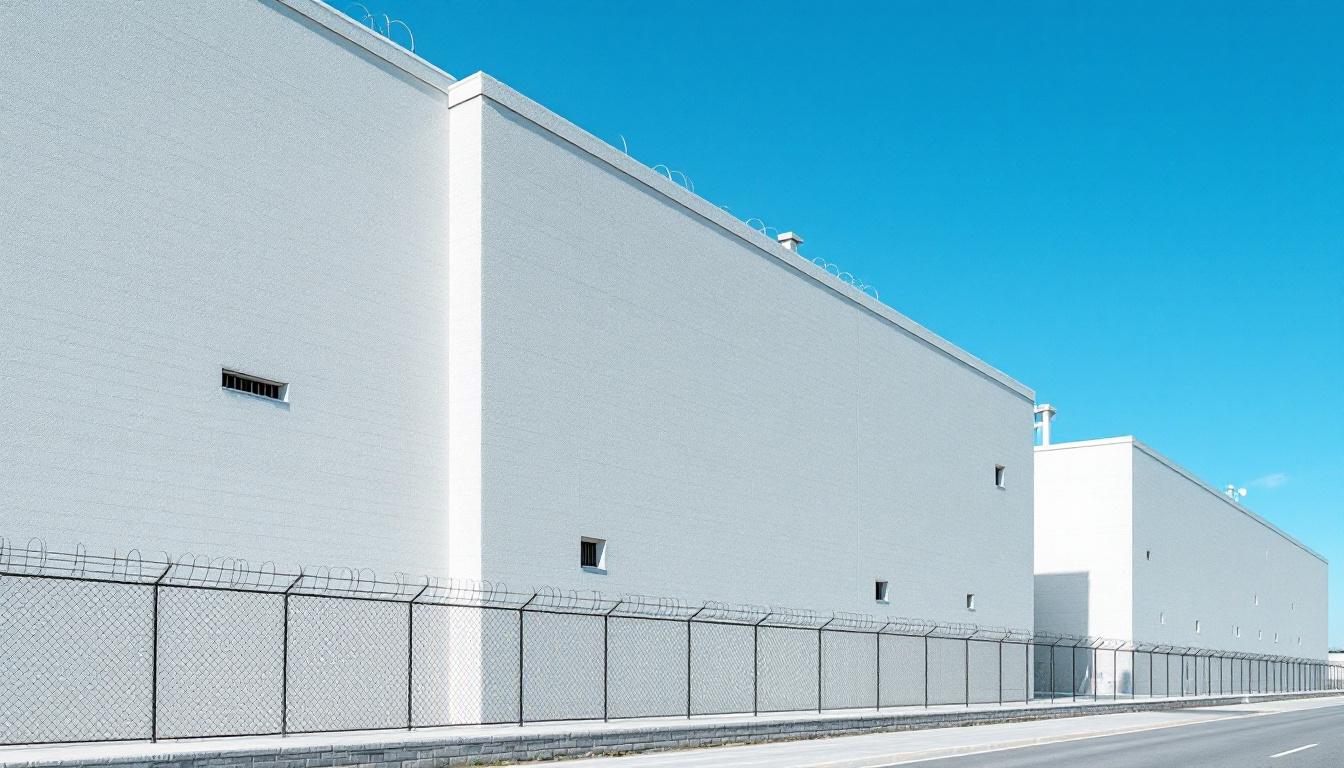
Quick Navigation
How to contact an inmate at Smart Communications Holding Inc
This comprehensive guide will walk you through how to connect with an inmate at Smart Communications Holding Inc. Follow the steps below to find an inmate and send letters and photos:
- Search for the inmate using our search tool below
- Create your account or log in to Penmate
- Write your message (up to 6,000 characters)
- Send instantly - inmates receive printed copies daily
Find an Inmate
Search for an inmate to start communicating today
Tip: You can search by first name, last name, or inmate ID number
To contact a person at Smart Communications Holding Inc start by searching for the person on the official facility website. Perform a search by following these steps:
- Step 1: Enter their first name and last name into the search form and click "Search"
- Step 2: Locate their inmate record
- Step 3: Write down their Inmate ID and any housing information provided
Important! Be sure to enter the person's full name. Nicknames should not be used.
How to Send Messages to Inmates

You can use your phone or computer to send emails, letters, and photos to an inmate. Messages are sent electronically to inmate tablets or kiosks at the facility. If you would like to send a message, start by searching for an inmate at Smart Communications Holding Inc.
Sending Photos and Postcards

A great way to send love and support to a loved one at Smart Communications Holding Inc is to send photos and postcards. It only takes a few minutes to send photos from your phone and it makes a huge difference. You can also mail postcards with words of support and inspiration, or design your own postcard for special moments like birthdays and holidays.
Important! Be sure not to send any explicit photos or they may not be approved by the facility. You can also use a photo printing app like Penmate to make sure your photos are printed at the correct size (4x6 or 3x5) and are mailed according to the rules and regulations of Smart Communications Holding Inc.
Frequently asked questions about Smart Communications Holding Inc
-
How long does it take to deliver a message?
If you're sending an email message your letter is usually delivered within 24-48 hours. For messages sent via mail you should expect delivery within 3-7 days. All messages will need be approved by Smart Communications Holding Inc.
-
How much does it cost to send a message to Smart Communications Holding Inc?
You can send a message free using your phone or mail a message via USPS for the price of a $0.60 stamp and envelope. You can also purchase credits or e-stamps from services starting at $1.99.
-
What services can I use to contact an inmate at Smart Communications Holding Inc?
Penmate
You can use Penmate to send letters and photos to an inmate from your phone. It's an easy way to stay in touch during your loved one's incarceration. Use the inmate locator to find an inmate's location and contact information, then you can send messages within a few minutes.
Securus messaging
Securus may be another option for communicating with an inmate at Smart Communications Holding Inc. You can create a friends and family account and purchase credits to send messages. All messages will be reviewed and must be approved by the facility.
JPay
Some county jails and state prisons may support sending messages with JPay. You must register an account with the system, find your loved one, and purchase stamps to send messages. For some locations you can also attach photos.
Smart Jail Mail
You may also check if Smart Jail Mail is available at Smart Communications Holding Inc. Smart Jail Mail is operated by Smart Communications and has contracted with some state and county jails. After purchasing credits, your messages and photos are sent to the facility, printed out, and then handed out to your loved one.
-
What is the mailing address of Smart Communications Holding Inc?
Mailing address:
Smart Communications Holding Inc
10491 72nd St
Seminole, FL 33777
Business hours:
- Monday: Open 24 hours
- Tuesday: Open 24 hours
- Wednesday: Open 24 hours
- Thursday: Open 24 hours
- Friday: Open 24 hours
- Saturday: Open 24 hours
- Sunday: Open 24 hours
-
What are the visiting hours at Smart Communications Holding Inc?
Visiting hours at Smart Communications Holding Inc vary by housing unit and security level. Generally, visits are scheduled on weekends and holidays, with some facilities offering weekday visits. Contact the facility directly for the current visiting schedule. Visits typically last 30-60 minutes and must be scheduled in advance.
-
What items are prohibited when sending mail to Smart Communications Holding Inc?
Prohibited items typically include: cash, personal checks, stamps, stickers, glitter, glue, tape, staples, paperclips, polaroid photos, musical or blank greeting cards, hardcover books, magazines with staples, and any items containing metal or electronics. Only send letters on plain white paper with blue or black ink. Photos must be printed on regular photo paper (no Polaroids). Always check with Smart Communications Holding Inc for their specific mail policies.
-
How do I send money to an inmate at Smart Communications Holding Inc?
You can send money to an inmate at Smart Communications Holding Inc through several methods: 1) Online using JPay, Access Corrections, or the facility's approved vendor, 2) Money orders mailed directly to the facility with the inmate's name and ID number, 3) Kiosks located in the facility lobby, or 4) Over the phone using a credit or debit card. Fees vary by method, typically ranging from $2.95 to $11.95 per transaction.
-
Can I schedule a video visit with an inmate at Smart Communications Holding Inc?
Many facilities now offer video visitation as an alternative to in-person visits. At Smart Communications Holding Inc, video visits may be available through services like Penmate, Securus Video Connect, GTL, or ICSolutions. Video visits typically cost $10-20 for 20-30 minutes and must be scheduled in advance. You'll need a computer or smartphone with a camera and reliable internet connection. Contact the facility for their specific video visitation policies and approved vendors.
-
What identification do I need to visit an inmate at Smart Communications Holding Inc?
All visitors must present valid government-issued photo identification such as a driver's license, state ID, passport, or military ID. Minors must be accompanied by a parent or legal guardian who can provide the minor's birth certificate. Some facilities require visitors to be on the inmate's approved visitation list, which may require a background check. Contact Smart Communications Holding Inc for specific ID requirements and visitor approval procedures.
-
How can I find out an inmate's release date?
To find an inmate's release date at Smart Communications Holding Inc, you can: 1) Use the online inmate search tool if available, 2) Call the facility's records department, 3) Contact the inmate's case manager or counselor, or 4) Have the inmate provide this information during a call or visit. For privacy reasons, some facilities only release this information to immediate family members.
Facility Overview
Contact Information
Smart Communications Holding Inc10491 72nd St
Seminole, FL 33777
Official Website

About Smart Communications Holding Inc
Nestled within the rural landscape of St Petersburg, Pennsylvania, this correctional facility operates as an integral component of the Pennsylvania Department of Corrections system, serving residents while maintaining strong connections to the surrounding mid-Atlantic community. Smart Communications/PADOC functions as a PA correctional facility designed to balance security requirements with evidence-based rehabilitation approaches that align with the state’s broader correctional goals. The facility typically emphasizes structured programming that may include educational opportunities, vocational training, and behavioral interventions aimed at supporting successful community reintegration.
The residents services offered at this St Petersburg correctional facility generally reflect Pennsylvania’s commitment to implementing research-supported practices in corrections. Programming approaches often focus on addressing underlying factors that contribute to criminal behavior, with particular attention to literacy development, job skills training, and substance abuse treatment when appropriate. These evidence-based interventions are designed to be accessible to residents with varying educational backgrounds and learning needs, recognizing that effective rehabilitation requires tailored approaches that meet individuals where they are in their personal development journey.
As part of Pennsylvania’s correctional network, the facility works to integrate its operations with statewide initiatives aimed at reducing recidivism and promoting public safety through meaningful rehabilitation. The institution typically maintains connections with community organizations and educational providers in the region, though specific partnerships may vary over time based on available resources and evolving correctional effective practices throughout the mid-Atlantic area.
Programs & Services
Rehabilitation-focused initiatives at Smart Communications/PADOC typically center on preparing residents for successful community reintegration through skill development and personal growth opportunities. The facility’s approach emphasizes practical education combined with therapeutic support services that address underlying issues contributing to criminal behavior. These comprehensive initiatives often include multiple pathways for residents to build marketable skills while working on personal development.
Educational and vocational initiatives form the foundation of resident preparation programs. Vocational education opportunities may deliver hands-on training in various trades, helping residents develop marketable skills for post-release employment. Education programs typically offer academic advancement opportunities, allowing residents to complete their high school equivalency or pursue additional learning. Commercial driving (CDL) training often provides residents with access to transportation industry careers, while specialized programs like upholstery training may deliver comprehensive craft skills that translate into employment opportunities upon release.
In addition to educational offerings, support services address the personal challenges many residents face. Therapeutic communities typically create structured environments where residents can work on behavioral changes and develop healthy coping mechanisms. Domestic violence programs may deliver specialized counseling and education for residents whose offenses involved intimate partner violence, focusing on accountability and behavior modification. These support initiatives often include group therapy sessions, individual counseling, and peer support networks that help residents address underlying issues while building the foundation for successful community reintegration.
Daily Life & Visitation

Structure forms the backbone of every day, with residents following established routines that typically begin with early morning wake-up calls and continue through scheduled meal times, work assignments, and evening activities. At present, the facility actively maintains consistent daily schedules that generally include designated periods for meals, programming, recreation, and rest. Count times occur regularly throughout the day, ensuring all residents are accounted for while providing natural transitions between different activities and responsibilities.
Living accommodations typically consist of shared housing units where residents may be assigned roommates based on security classification and program participation. The facility generally provides basic furnishings including beds, storage areas, and writing surfaces, while residents can usually purchase additional approved personal items through the commissary system. Meals are typically served in designated dining areas at scheduled times, with menus that often rotate weekly to provide variety within nutritional guidelines established for correctional facilities.
In addition to this daily structure, residents may participate in various work assignments that deliver both skills training and facility maintenance responsibilities, such as kitchen duties, laundry services, or grounds keeping. Recreation opportunities typically include access to exercise areas, television viewing rooms, and library services during designated hours. Despite this structured environment, the facility usually maintains visitation schedules that allow residents to connect with family members and approved visitors, while communication options may include monitored phone calls and correspondence to help maintain important relationships during their time at the facility.
Ready to Connect?
Start communicating with your loved one today
Search for an Inmate









